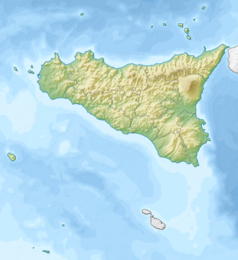Bitwa przy przylądku Passero
| ||||
| ||||
 Bitwa przy przylądku Passero | ||||
| Czas | 1718 | |||
| Miejsce | przylądek Passero | |||
| Terytorium | Sycylia | |||
| Wynik | Zwycięstwo floty angielskiej | |||
| Strony konfliktu | ||||
|---|---|---|---|---|
| ||||
| Dowódcy | ||||
| ||||
| Siły | ||||
| ||||
| Straty | ||||
| ||||
| 36,69°N 15,15°E/36,686900 15,148300 | ||||
Bitwa przy przylądku Passero – starcie zbrojne, które miało miejsce w roku 1718 w trakcie wojny czwórprzymierza.
W roku 1718 Hiszpania, dążąca do odzyskania utraconych w wyniku hiszpańskiej wojny sukcesyjnej posiadłości we Włoszech zajęła Sycylię, wywołując tym samym zbrojną interwencję Anglii, Francji, Holandii i Austrii.
W sierpniu 1718 r. angielska eskadra admirała George Bynga (29 okrętów) natknęła się w rejonie przylądka Passero na flotę hiszpańską pod dowództwem admirała Antonio Gaztañety (47 okrętów). W wyniku zaciekłej bitwy Hiszpanie ponieśli klęskę tracąc 23 okręty, 2 400 zabitych, rannych oraz 3 000 jeńców. Straty angielskie wyniosły 500 zabitych i rannych. W wyniku bitwy Hiszpanie zostali wyparci z całej Sycylii z wyjątkiem garnizonu w Mesynie, który w międzyczasie odbili z rąk Sabaudczyków.
Bibliografia
- Zygmunt Ryniewicz: Leksykon bitew świata, wyd. Almapress, Warszawa 2004.
|
Media użyte na tej stronie
Symbol miejsca bitwy do legendy mapy
Autor: Eric Gaba (Sting - fr:Sting) and NordNordWest, Licencja: CC BY-SA 3.0
Blank physical map of Italy including the 08-2009 modification of the boundary between Emilia-Romagna and Marche regions, for geo-location purpose.
In this painting, created half a century after the event, the action is shown at about 4 o'clock. Byng's flagship the 'Barfleur', 90 guns, is prominently depicted firing her starboard broadside, in starboard-bow view left of centre, into the 'San Luis', 60 guns.
On the right, the principal Spanish flagship, the 'Real San Felipe', 74 guns, is shown in starboard-broadside view being raked from the stern by the 'Superbe', 60 guns, and hauling down her flag. This fire is being returned by a Spanish rear-admiral in port-quarter view, and by another Spanish ship which is seen in port-bow view on the 'Barfleur's' quarter, almost obscured by smoke. To the left of this group a Spanish ship lies in starboard-quarter and broadside view, with her colours struck. To the left of her are the bows of an English ship beside a further prize. On the right of the painting, in the distance, another Spanish Rear-Admiral is sailing out of the picture, hotly engaged on both sides. Of the Spanish fleet, 16 were taken and seven burnt.
The artist started his painting career as an assistant to a ship's painter on Sir Charles Knowles's ship, and he rose to become one of the principal painters of naval actions of the 18th century. The painting was exhibited at the Society of Artists in 1767 and 1768.





